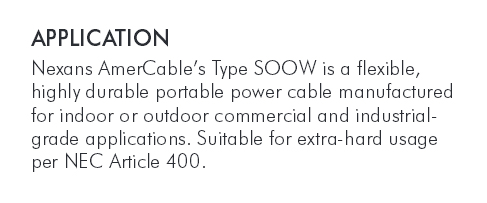FionaZuppa
Senior Member
- Location
- AZ
- Occupation
- Part Time Electrician (semi retired, old) - EE retired.
Made up words. LOL. Yep somebody did make them up and put them right there in the NEC.
One manufacturer does us the term on their site.
http://www.southwire.com/products/ViperRubberTypeSOOWBlack.htm
yeah, i can see where some might say the cord laying flat behind a barrier is "extra hard usage".
or perhaps being ran over by a CAT dozer 100x a day is "extra hard usage".
wait, did i miss "extra hard usage" in Article 100?
But it gets better, there is "hard usage" too. "hard" and "extra hard". could there be such a thing?:happysad::happyyes:, she knows but doesnt tell.
portable lights for "extra hard use"? so that as my gauge would a fixed light be "hard use"?Southwire Type SOOW Flexible Cords are permitted for use as specified by Article 400 and related articles of the 2011 National Electrical Code. Southwire Type SOOW Flexible Cords are designed for extra hard usage on industrial equipment, heavy tools, battery chargers, portable lights welding leads, marine dockside power, power extensions and mining applications.
So to note: the vendor sites that do have "extra hard usage" do so in context of "thats what it says in NEC, our cable is suitable for that". in other words, it's NEC verbiage and the vendors are just stealing it to say their cord stuff is compliant for that use, etc.
Last edited:



